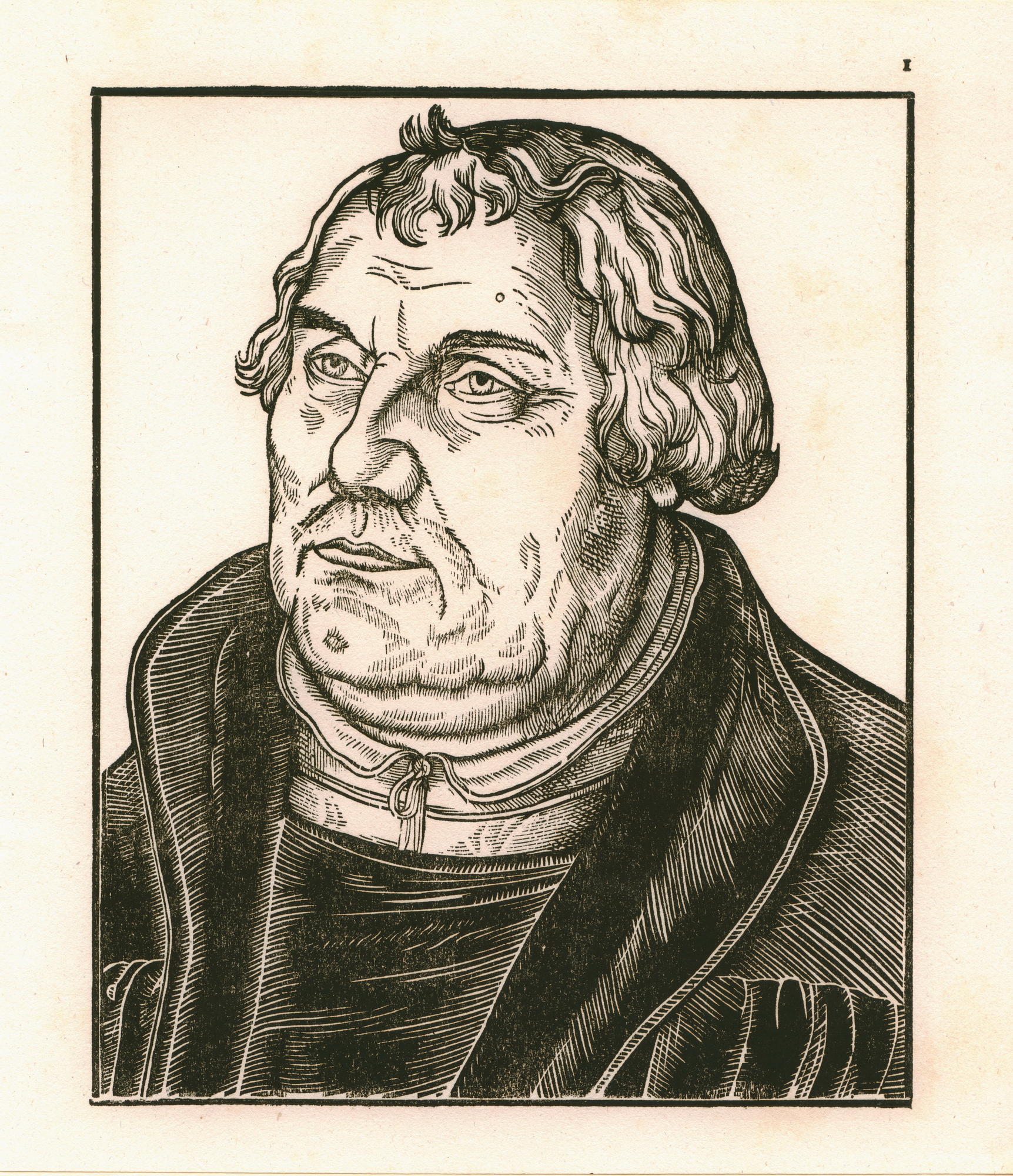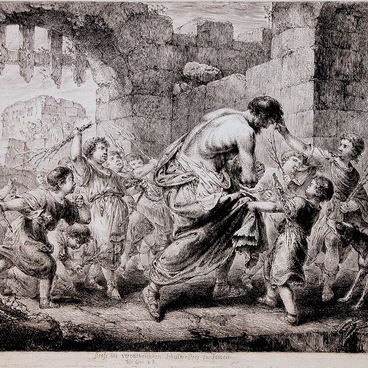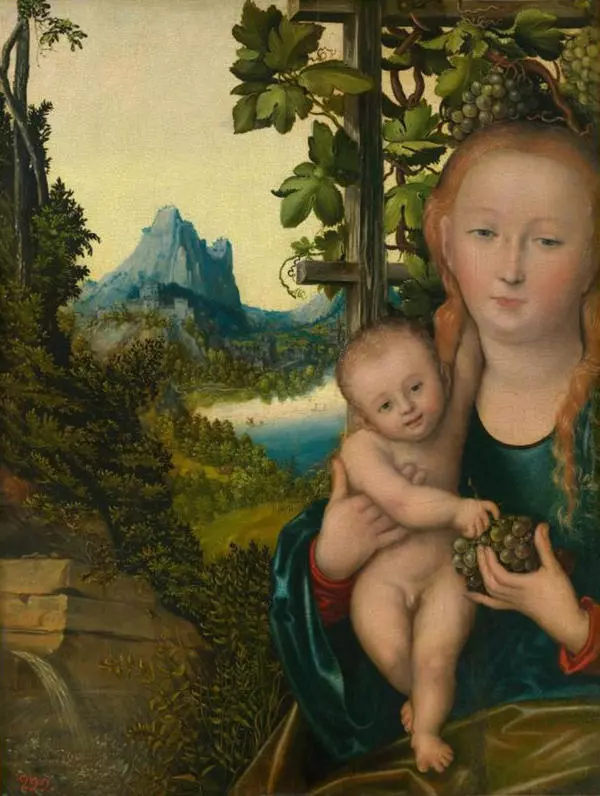The wood-cut print shows Martin Luther, a Christian religious scholar and the initiator of the movement for Reformation of the Roman Catholic Church, the translator of the Bible into German and one of the originators of the Standard German language.
Luther was a monk of Augustinian Hermit Order and lectured in the University of Wittenberg. In 1515, developing his lectures on Epistles of Paul the Apostle, Luther arrived at conclusion that the sinner can save himself: thanks to his belief in Christ and the grace of God. That idea was wholly at odds with the idea of Catholic indulgencies, when the Church was supposed to forgive the sinner. The indulgency relieved the evildoer from punishment in part or in full; each Roman Catholic could gain indulgency for oneself or for their deceased relatives. Priests, bishops and the Pope often provided indulgency against donations. In people’s minds the indulgency became synonymous with trade, and only the chosen ones could own “the goods”.
In 1517 Martin Luther developed his Ninety-Five Theses, where he criticized Roman Catholic theology, priests and bishops, false propositions of Purgatory, and also proclaimed priority of the Gospels over indulgencies and asserted that Papal forgiveness did not guarantee quiet afterlife. Luther condemned the cult of the saints, priests’ celibacy and the need for the church to be an intermediary between the man and God. Thus, the Reformation started in Germany and all over Europe.
Luther’s ideas spread quickly around University circles and found support with intellectuals and Christian humanists. When in 1520 Luther did not repudiate his views, Emperor Karl V Habsburg proclaimed him an outlaw. Pope Leo X issued his bull Exsurge Domine, a document that listed Luther’s fallacies, and threatened to excommunicate Luther. A few months later Luther and his students publicly burned the bull and the scrolls with canon law, the basis of church legislation.
Luther was a monk of Augustinian Hermit Order and lectured in the University of Wittenberg. In 1515, developing his lectures on Epistles of Paul the Apostle, Luther arrived at conclusion that the sinner can save himself: thanks to his belief in Christ and the grace of God. That idea was wholly at odds with the idea of Catholic indulgencies, when the Church was supposed to forgive the sinner. The indulgency relieved the evildoer from punishment in part or in full; each Roman Catholic could gain indulgency for oneself or for their deceased relatives. Priests, bishops and the Pope often provided indulgency against donations. In people’s minds the indulgency became synonymous with trade, and only the chosen ones could own “the goods”.
In 1517 Martin Luther developed his Ninety-Five Theses, where he criticized Roman Catholic theology, priests and bishops, false propositions of Purgatory, and also proclaimed priority of the Gospels over indulgencies and asserted that Papal forgiveness did not guarantee quiet afterlife. Luther condemned the cult of the saints, priests’ celibacy and the need for the church to be an intermediary between the man and God. Thus, the Reformation started in Germany and all over Europe.
Luther’s ideas spread quickly around University circles and found support with intellectuals and Christian humanists. When in 1520 Luther did not repudiate his views, Emperor Karl V Habsburg proclaimed him an outlaw. Pope Leo X issued his bull Exsurge Domine, a document that listed Luther’s fallacies, and threatened to excommunicate Luther. A few months later Luther and his students publicly burned the bull and the scrolls with canon law, the basis of church legislation.






